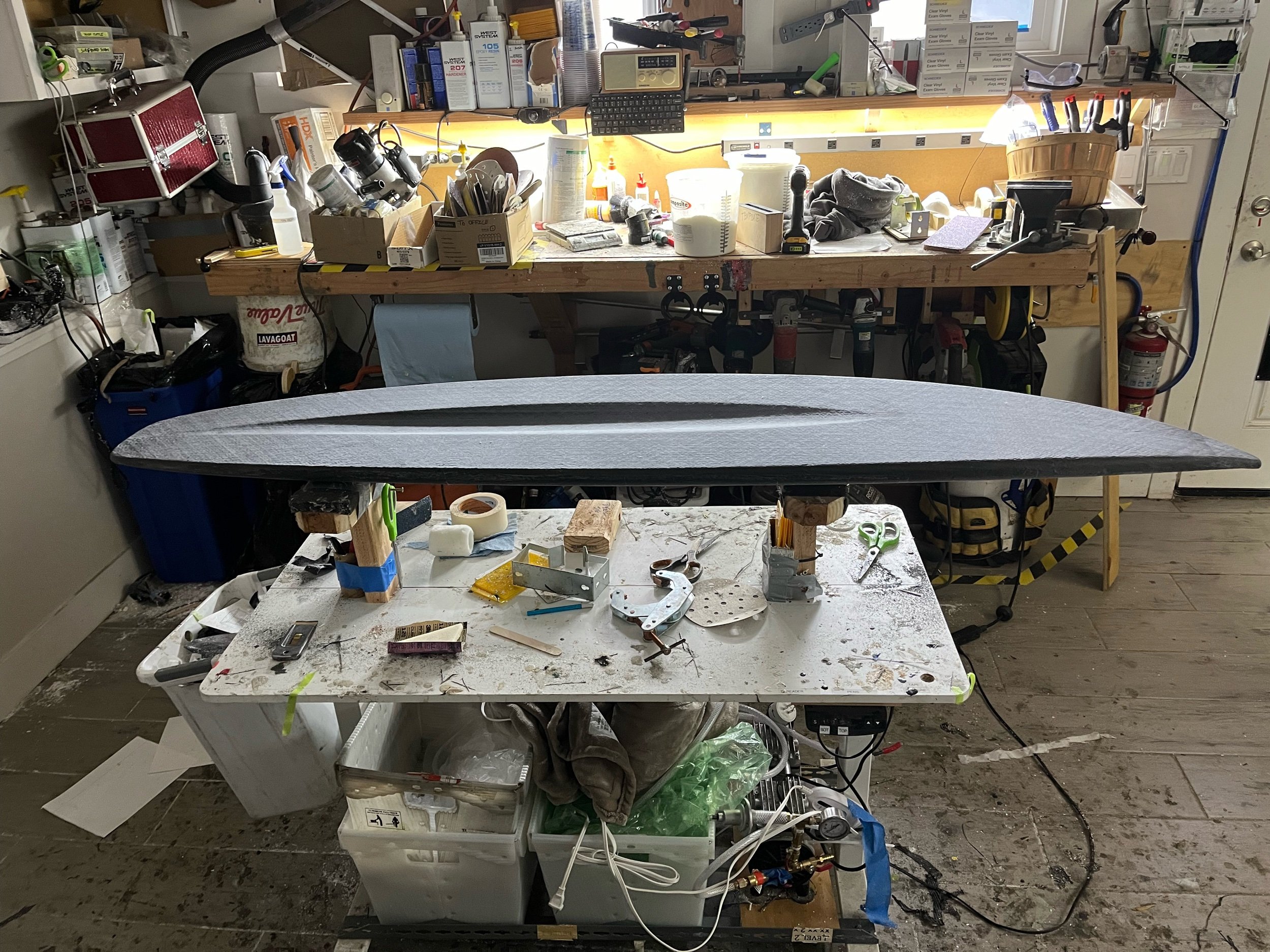TOW BOARDS!
*
TOW BOARDS! *
Even with the new designs, athletes are still struggling with ventilation issues, stability and a feeling of “sluggish” responses.
THE PROBLEM
Tow in boards utilize built in weights and high aspect shapes to combat the extreme forces big waves exert. The boards must push past the sucking motion of water rising up the face as well as keep stability for the rider at speeds often exceeding 75km/hr.
The current board design often has a set of 4 fins (quad) with a reinforced transom and notched stern with sunk chines for channeling water across the fin surfaces.
“feels stiff and sticky”
THE DESIGN PROCESS
-
An improvement on overall flow profile. Instead of starting from scratch, a global optimization approach (VPP) is used to redesign tried and tested big wave boards.
-
The key focus is on reducing drag and enhancing stability during maneuvers. The design considers variables such as drag (influenced by skin friction, board shape, hydro, and aerodynamics), stability, material stiffness, and glide.
-
Strategies include maintaining a smooth bottom for laminar flow and using a turbulent boundary layer via a centerline channel to reduce drag. The ultimate aim is to achieve maximum efficiency by balancing these factors in board design.
